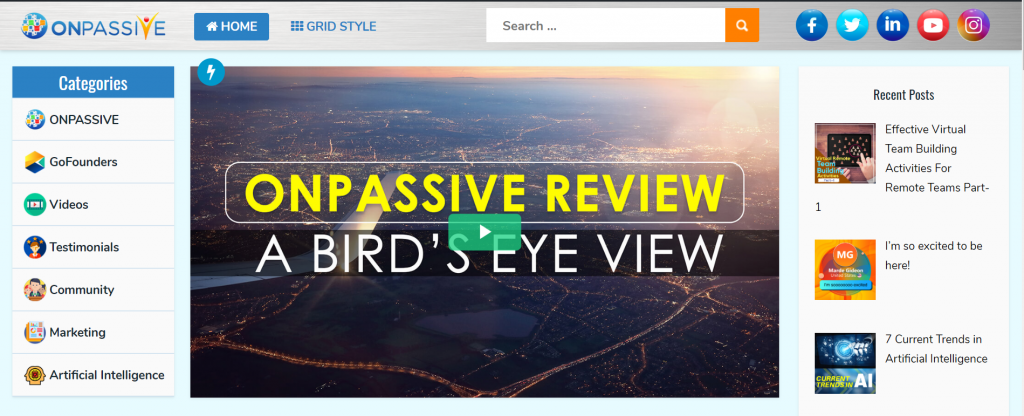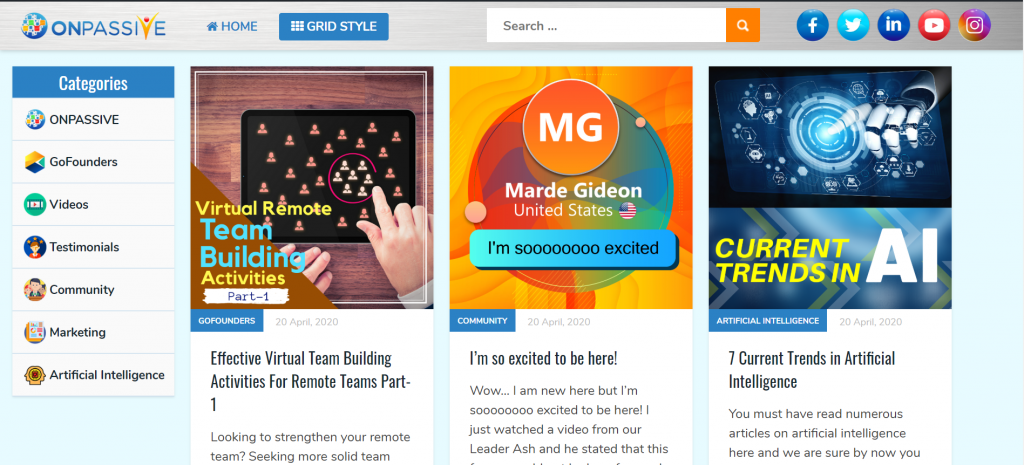
Creating a successful blog strategy is an essential marketing activity for your business. “Did you know above 50% of the marketers consider blogging to be their top inbound marketing priority? ” Additionally, there is a possibility that marketers can get about 13X returns on their investment.
The blog has consistently and improvingly showed that it is an effective marketing activity. However, it is fundamental to learn that blogs can’t be content that is put out to fill your webspace. Blogs play a key role in increasing brand awareness, generate revenue, and boost conversions. All this is possible only if the blog content is valuable to your targeted audience and is designed and written, keeping the target in mind.
Therefore, before you begin creating blogs, it is necessary for you to learn how to create a successful blog strategy that will target your potential audience and provide high-quality content and value while improving your business reputation. That’s when a blog marketing strategy comes into place. Let’s look into creating a blog strategy.
Creating a successful blog strategy:
Building a successful blog strategy needs to go through a list of checkpoints, and only when a strategist gets it right, a blog can bring in more traffic to your website. Read on to learn more about what those must-do things are to build a successful blog strategy.
1. Choose a blog topic
It’s not that simple because choosing a topic takes research and more awareness about the brand and target audience. You can’t just pick random issues to create more content. Every topic must be relevant and valuable to the readers. Else it will only increase more bounce rates – meaning more will immediately steer away from your website if the content isn’t relevant or valuable.
2. Host it using a relevant platform
Once you have chosen the right topic, you need to write and host the blog using the right platform. There are several blog hosting tools in the market. WordPress is one such tool using which you can post your blogs. ONPASSIVE AI platform also provides you the hosting platform to post your blog and optimize it for SEO so that more readers find you blog on the internet and generate revenue for your business.
3. Domain registration
Register a relevant domain name for your business. For example, https://onpassive.com is a domain that represents a business. However, for blogs, you need to move a step further and create a subdomain. Considering the same example, ONPASSIVE’s blog subdomain is https://onpassive.com/blog. But to optimize each of your blogs for SEO, you need to generate a URL for individual blogs. So the URL for a blog could look like this https://onpassive.com/blog/automation-is-good-for-business/. This is really helpful for optimizing it for the search engines.

4. Ownership of the blog content
It is essential to create a streamlined structure for the consistent creation of blogs. To do that, you need to assign tasks and make them own it. Ideation of blog topics should be owned by a person, or that person can also write it depending upon the marketing team. Depending upon the resources, you must assign tasks such as topic ideation, keyword research, article research, writing and editing, strategy and content calendar, creatives for blogs, promotion, repurposing, and updating.
5. Writing valuable blog content
We can’t emphasize enough how much writing a well-researched and relevant content is essential in making your blog more reachable to the readers. The more creative, professional, and scientific you are in your writing approach, your brand will be viewed in high regard. Moreover, you can keep your audience engaged more with a compelling blog. This will boost the SEO performance of the blog and bring in more visitors.
The more visitors come to your website, it will increase the credibility of your website or blog online and will further help your future publications.
6. Design your blog
Writing a compelling blog isn’t enough to keep the visitors engaged. It needs more than just that. Your blogs need to be formatted or designed to make it more digestible for viewers. Research suggests that the more text you have on your page, the more you turn off readers earlier.

Therefore, it is essential you format your blog in an easily consumable manner. You can design your blogs with infographics, short video explaining complicated aspects of your blog, creatives to keep the viewers hooked. To do it yourself, the blog hosting platforms offer blog templates for you to choose from and have your article present in a more consumable form.
7. Embed CTAs to your blogs
The reason you choose to write blogs is to improve traffic to your website and improve sales conversions and increase brand awareness. Therefore, you are expecting some action from your prospective customers based on your blogs. It becomes imperative that you include ‘Call to Action’ in your blog copy so that it prompts readers to take action based on your content. CTAs are essential, and you should not write a blog without it, because it ends up serving no purpose to your business.
The reader’s memory is very short because the internet is flooded with similar content, and it will be next to impossible for your readers to differentiate between your brand and others by just reading a blog. That’s why they need to take action so that they can be engaged with further in their buying journey.
8. Post your blog frequently and analyze
You need to create a blog calendar to be consistent in creating content and putting it out regularly. Based on the blog calendar, you need to frequently and consistently create blog posts to keep your audience interested and engaged. Also, it is good to have an editorial schedule for your blogs. Here, the editor can come up with blog topics and post the content at a consistent rate. This will help improve the credibility of the blog.
The editorial post creates a sense of accountability among your team of writers and motivated them to write better and own their opinion. Once the blogs are published, you must analyze the performance of those blogs weekly and make specific changes to boost their performance.
Now, we have to move to the next important part of the successful blog strategy.
Related: Make Artificial Intelligence Write Your Blogs
Blog Marketing Strategy:
You have written the blogs and published them frequently in decent numbers, but that doesn’t make your blog strategy successful unless you promote the blogs heavily via relevant platforms.
1. Determine your blog’s purpose
Every blogger and the topics have a purpose. You should ask this question to yourself and see that you get a straight-forward answer like sales conversions, brand awareness, product marketing, etc. Move ahead to the next step only after you finalize the purpose.
2. Promote on relevant platforms
Keeping the buyer’s persona in mind, you should promote your blogs on the relevant platforms. It could be social media channels like Facebook, Twitter, Quora, Google search, and others. You should ensure that the channels you choose consists of your target audience.
3. Research your competition
You should have an eye on your competitors’ blogs and research them accordingly. You consider their strategy too before you come up with your blog marketing strategy because the competitor’s strategy can affect yours.
Via thorough research, you can experiment with your blog marketing strategy and counter your competitors. You should shortlist about 5-10 competitors’ and conduct a content audit using advanced audit tools like SEMRush, QuickSprout, Moz, etc. When you conduct the research, you identify the content gap and where your competitors are failing. Only then you come with better content that will drive users to your website instead of your competitors’.
4. Repurpose your content for long term returns
After you create the blog content bank and publish them all, it still will be relevant at times to use your best-performing blogs and repurpose it for your benefit. One thing you must consider is that the relevance to today’s time must not be missed. As long as you keep the relevancy and yet provide value while repurposing old articles is pretty much recommended.
Firstly, it will save time and resources and bank on the popularity of the content and expect a better response to it. However, research is quite needed before you decide what content to repurpose.
5. Make your content discoverable
When you take the necessary steps and give the right amount of time for search engine platforms and social media, your content should reach the maximum potential readers and evoke a great response. This is how you make your blog content discoverable to average readers. Ensure you have left no online avenue undiscovered to reach your potential readers.
Conclusion:
Creating a blog marketing strategy is an exhausting yet essential task to make your brand accessible and generate revenue for your brand. By building the content vault and disseminating the much-needed information to your target customers, you will establish trust with them. The strategy will create unprecedented success in your online strategy. Get set now and start creating the content strategy and its framework to keep your customers engaged.



Greg Hill
4 years ago
John Mentus
4 years ago
Jessy Wilson
4 years ago
Stefan Ozsvath
4 years ago
Clementine McCrowey
4 years ago
ONPASSIVE
4 years ago